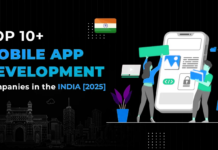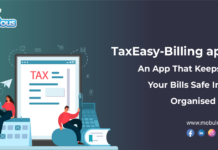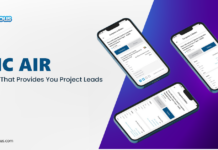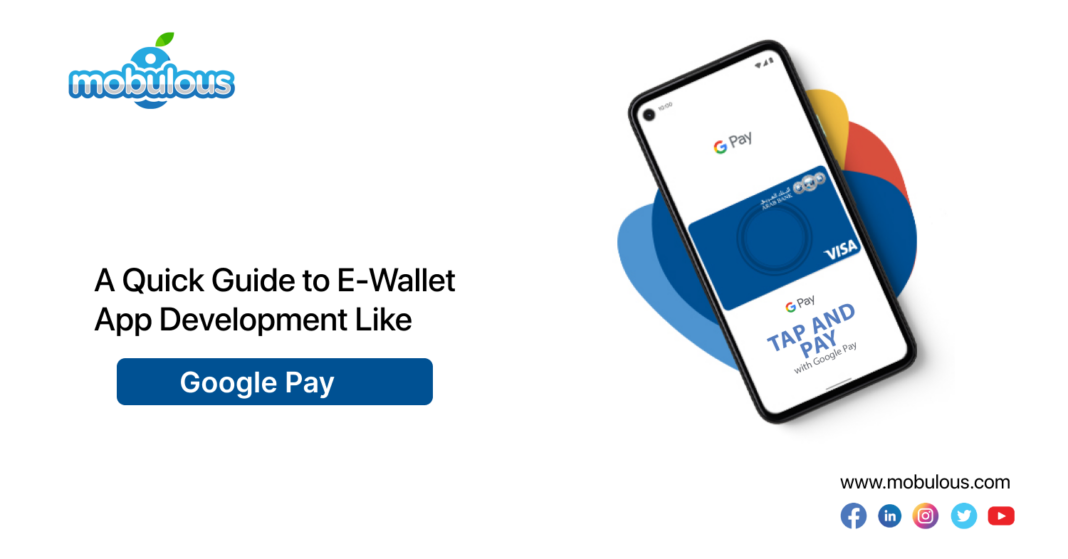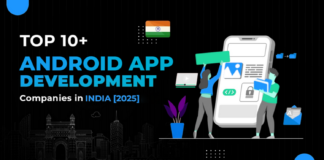E-wallet app development like Google Pay allows people to handle their money properly. With these apps, transactions have become seamless, secure, and fast. In this domain, Google Pay has set a high standard for what a digital wallet app can achieve.
Payment apps such as PayPal, Paytm, and Google Pay are overpowering today’s FinTech market where mobile wallet apps like Google Pay are directing this action. As per a study issued by Allied Market Research, the global digital wallet market is anticipated to strike USD 7.6 Trillion by 2027.
Let’s move forward and peek at mobile app development similar to Google Pay. In addendum to this, we will understand the must-have features, the proper technology stack, benefits, how the app works, cost, and future improvements in the FinTech and e-wallet market.
What is an E-Wallet App Like Google Pay?
A digital, online, or e-wallet is an electronic rendition of a physical wallet that you use to purchase something in stores. It enables you to manage and control your money effectively. It is normally a mobile application that you download and install on your smartphone.
The app permits you to make payments, send/receive money, and handle all your money in just one place. With an e-wallet app, you are able to link your bank account, credit cards, and miscellaneous payment strategies to the mobile application.
With this, you need not to carry cash or physical cards with you. This comfort is availing these applications to become increasingly prevalent in the 21st century. These apps entice Techfin and FinTech companies as they deliver a safe and quick way to organize payments and finances.
Steps to Develop an E-Wallet App Like Google Pay
E-wallet app development like Google Pay involves strategic planning and development. Let’s learn the most important steps for building a digital payment app for Android and iOS platforms just like Google Pay. These steps are mentioned below:
- Market Research and Analysis
- Incorporate Essential Features
- Design the User Interface (UI)
- Select the Right Technology Stack
- Start With the E-Wallet App Development
- Implement Security Measures
- Integrate Payment Gateways
- Testing and Quality Assurance
- Launch and Deploy the E-Wallet App
- Post-Launch Activities
- Legal and Compliance Considerations
1. Market Research and Analysis
Regarding e-wallet app development, market research and analysis is a crucial step in analyzing and conquering current market trends, identifying your target audience, and assessing your competitors.
- Analyze Current Market Trends: Before diving into the domain of digital wallet app development, make sure to peek into how mobile wallet use is expanding, what advancements they aspire to, and what features/functionalities users choose.
- Identify Your Target Audience: Exemplify who your mobile app is for (millennials, small businesses, or a global audience). Make sure to comprehend your target audience as they are the only ones who will direct your feature collection and design preferences.
- Assess Your Competitors: Evaluate existing e-wallet apps like Google Pay and recognize their resilience and imperfections. This will enable you to learn what works correctly and where there are opportunities for new acquisitions.
2. Incorporate Essential Features
Adding essential features to an E-wallet app involves incorporating functionalities that improve user experience and security.
You must assimilate essential components into your mobile app, including user registration and authentication, linking bank accounts and cards, considering balance and transaction history, protected payment gateways, and QR code or NFC payments.
In proliferation to this, loyalty programs, push notifications, and recommendations are able to boost user engagement. These fundamental characteristics ensure that your app is user-centric, protected, and competitive in the TechFin and FinTech market.
3. Design the User Interface (UI)
After understanding the e-wallet and FinTech app development market and analyzing what features you need to add to your app, next comes designing the User Interface (UI) perfectly.
- Importance of a User-Friendly Interface: An intuitive and simple UI is crucial for offering user retention, engagement, and satisfaction. An intricate interface will surely drive your users away and increase bounce rates.
- Key UI Design Principles: Concentrate on consistency, simplicity, and responsiveness of your UI design. Leverage seamless and familiar icons and simple navigation. Hire UI/UX designers for your e-wallet app development project and take your business to the next level.
- Create Wireframes and Prototypes: Begin with building the wireframes in order to outline the structure of your e-wallet app. Create prototypes in order to envision the functionality of the app and seek user feedback early in the procedure.
4. Select the Right Technology Stack
Selecting the right technology stack is important for front-end development, back-end development, security building, and payment gateway integration. Let’s learn some important technology stacks for E-wallet app development like Google Pay.
- Front-end Technologies: For a seamless cross-platform venture, you must utilize popular technologies like React Native or Flutter frameworks, enabling you to create applications for iOS and Android with a single codebase.
- Back-end Technologies: Choose a strong back-end framework such as Django or Node.js in order to ensure that it is able to endure high traffic and deliver maximum scalability.
- Security Technologies: Implement security standards such as SSL/TLS for data encryption, and utilize assured and protected coding approaches in order to protect against any vulnerabilities.
- Payment Gateway Integration: Integrate your mobile application with a dedicated payment gateway and make sure it sustains the payment approach as per the discretion and preferences of your target audience.
5. Start With the E-Wallet App Development
Now begin with the e-wallet app development like Google Pay. Follow the below points to build it perfectly.
- Set Up the Development Environment: Set up your app development environment with the essential tools and frameworks. Make sure that your e-wallet app development team has the proper knowledge and understanding of the technology stack.
- Front-end Development: Concentrate on building a responsive and intuitive front-end of your e-wallet app. Make sure that it works smoothly on multiple devices and different screen sizes.
- Back-end Development: Build a secure and scalable back-end of your digital wallet app. Make sure to manage user authentication, transactions, and data storage effectively. Hire backend developers for better productivity and to help your business stay ahead of the curve.
- Database Management: Select a reliable database system such as PostgreSQL or MongoDB. Make sure that it is able to handle and manage extensive volumes of user data.
6. Implement Security Measures
Executing security standards in your mobile payment application is excessively consequential to guarding susceptible data and information.
- Data Encryption: Encrypt all susceptible and critical data in order to safeguard it from unauthorized access. Leverage AES or RSA encryption standards.
- Multi-Factor Authentication: Execute multi-factor authentication, i.e., MFA in order to add extra security, including email verification, SMS-oriented OTP, or biometric validation.
- Secure APIs: Make sure that all APIs utilized in your digital payment application are safe and secure. Utilize permits for API authentication and enforce rate limiting.
- Regular Security Audits: Conduct regular security audits in order to identify and resolve susceptibilities, helping to maintain the integrity and security of your mobile app for the FinTech domain.
Also Read:- How to Choose the Best Company for Fintech Mobile App Development?
7. Integrate Payment Gateways
Now, comes the most important part where you need to integrate the payment gateway. For this, you ought to track and observe the below points precisely:
- Select a Payment Gateway: Determine a payment gateway (Stripe, PayPal, etc.) that sustains diverse payment strategies and currencies. Make sure it has a vigorous security history and an acceptable customer support strategy.
- Integration Process: Observe and follow the integration guidelines of the payment gateway carefully. Make sure to test it comprehensively in order to ensure smooth and seamless transactions.
- Ensure Transaction Security: Leverage secure protocols for finance transaction data transmission. Never forget to update your payment gateway integration regularly in order to adhere to the most delinquent security standards.
8. Testing and Quality Assurance
Testing plays the most consequential part in the fundamental e-wallet app development strategy and procedure in order to make sure that the app is operational and scalable.
- Types of Testing (Unit, Integration, System): Execute various testing styles in order to provide your application’s functionality. Unit testing examines individual segments, integration testing examines integrated parts, and system testing scrutinizes the fundamental app.
- User Acceptance Testing: Apply real users in testing your mobile apps. Their feedback is able to assist you to identify and resolve usability issues and bugs.
- Bug Fixing and Optimization: Resolve any bugs and issues recognized at the time of testing. Optimize the digital payment app for efficiency, scalability, and performance.
9. Launch and Deploy the E-Wallet App
After e-wallet app development and testing have been conducted and achieved, it is time to launch and deploy your app on the App Stores, i.e., Google Play Store and Apple App Store.
- Prepare for Launch: Ensure that your e-wallet app is completely tested and optimized. Formulate a proper and extensive marketing schedule around your app deployment.
- Marketing Strategies: Use social media, email campaigns, and influencer marketing in order to facilitate your mobile wallet app. Make sure to highlight and outperform its impressive features, functionalities, and benefits.
- App Store Optimization (ASO): Optimize your app’s listing on App Stores (Google Play Store and Apple App Store). Utilize attractive screenshots, required keywords, and tempting reports in order to enrich visibility.
10. Post-Launch Activities
Seek feedback from users in order to understand their experience and areas of improvement. Leverage these feedbacks to enrich your application. Release regular updates in order to resolve bugs, enhance performance, and add the latest features.
It is important to keep your application fresh and engaging, therefore regular updates are mandatory. Provide excellent customer support options that will help your users with any issues, helping in building trust and loyalty.
11. Legal and Compliance Considerations
Legal and compliance deliberations are essential when it comes to e-wallet app development. Comprehending and clinging to regional financial constraints, including PCI DSS for payment protection and KYC for user verification is essential.
In addendum to this, data solitude and privacy laws such as GDPR in Europe and CCPA in the USA organize user data compilation, storage, and processing. Assuring adherence to these restrictions protects users from lawful repercussions.
Periodic updates and audits of your adherence protocols help you sustain compliance with the changing rules and regulations. This safeguards sensitive information and builds user trust and credibility for your digital payment app.
Which is the Best Platform for E-Wallet App Development Like Google Pay?
Choosing the most suitable platform for e-wallet app development like Google Pay relies on your objectives and target audience. For ultimate reach, make sure to consider creating applications for Android, iOS, and web app platforms.
iOS app development offers a high-quality and secure environment that appeals to users who value premier features and seamless performance. Android app development provides access to larger, greater customization options, and a more diverse user base.
Utilizing cross-platform development mechanisms such as Flutter or React Native can boost the function and procedure, allowing you to create applications for both Android and iOS simultaneously, delivering comprehensive accessibility and user concentration.
Select the Right Technology Stack for E-Wallet App Development Like Google Pay
Determining the suitable technology stack for e-wallet app development such as Google Pay is indispensable for guaranteeing security, undertaking, and scalability. Some of the most profitable technology stacks are noted below:
- Front-end Development: Utilize Flutter or React Native for cross-platform compatibility, allowing you to create mobile apps for both Android and iOS with a single codebase. These frameworks deliver a seamless and hassle-free user experience and persuasive interpretation for the long term.
-
- Back-end Development: Determine a substantial and full-bodied framework such as Node.js or Django for the back-end development of your digital wallet app. Node.js delivers a scalable and secured domain for real-time mobile apps whereas Django delivers a top-level of protection and a structured framework.
- Database Management: Select databases like MongoDB or PostgreSQL which are able to handle and manage volumes of transactions and provide strong data management.
- Security Technologies: Implement SSL/TLS for data encryption, utilize protected coding techniques, and incorporate multi-factor authentication. Periodic security audits are obligatory in order to preserve the virtue of the mobile app.
- Payment Gateway Integration: Integrate dependable payment gateways such as PayPal, Stripe, or Braintree, delivering secure transaction processing and sustaining various payment methods.
Benefits of E-Wallet App Development Like Google Pay
Building an e-wallet app like Google Pay offers various benefits. These advantages are mentioned below.
- Convenience: Users are able to make payments, and manage/handle finances seamlessly from their smartphones, eliminating the need to carry cards or cash.
- Speed: Transactions are processed promptly, lessening the waiting time for users and businesses.
- Security: Advanced security features, including multi-factor authentication, encryption, and protected payment gateways safeguard user data and transactions.
- Accessibility: E-wallet apps are available 24*7, enabling users to make payments anytime and anywhere.
- Cost-Effective: Electronic transactions usually incur lower fees as compared to conventional banking methods, saving users time and money.
- Improved Customer Experience: Features such as balance checking, transaction history, and loyalty programs enhance user retention, engagement, and satisfaction.
- Market Reach: By providing a mobile payment alternative, businesses are able to appeal to a wider audience. This includes tech enthusiasts without conventional banking access.
- Innovation: By adopting the latest mobile app development trends and technologies in e-wallet and digital payments, you will be able to stay ahead of the competitive curve.
How Does an E-Wallet App Like Google Pay Work?
An e-wallet application like GPay works by enabling users to enter their credit/debit card and bank account data safely on their smartphones. Users are able to register and validate their accounts with the help of their email, biometric data, or phone numbers.
For transactions, the application generates unique QR codes or tokens in order to foster payments, ensuring that crucial information is never transmitted directly. It supports contactless payments through online purchases, NFC technology, and peer-to-peer transfers.
The mobile app also provides balance checks, transaction history, and security features such as multi-factor authentication and encryption in order to protect user data, information, and transactions.
Innovating in the domain of e-wallets simply means discovering the latest features and functionalities that can improve the user experience and facilitate the workflow. For instance, integrating virtual cars, AI-powered personal finance management tools, and loyalty programs.
Overview of E-Wallet App Development Cost Like Google Pay
The e-wallet app development costs like Google Pay vary significantly depending on several factors, including app complexity, platform, design, security, and the location of the development team. However, the estimated cost of mobile wallet app development ranges from USD 20,000 to USD 200,000.
- App Complexity: A basic app with minimum features, including user registration, simple transactions, and balance checking may range from USD 20,000 to USD 50,000. However, a complex app with advanced features like NFC technology, QR code payments, multi-currency support, and loyalty programs ranges between USD 45,000 to USD 200,000.
- Platform: Building apps for both Android and iOS increases cost. However, developing apps for cross-platform with the help of essential frameworks like React Native or Flutter can be more cost-effective.
- UI/UX Design: A user-centric and intuitive design is important and adds up to USD 10,000 to USD 25,000 to the overall cost.
- Security Measures: Enforcing robust security features, including multi-factor authentication, encryption, and secure payment gateways may add USD 10,000 to USD 18,000.
- Location of the Development Team: Costs differ on the basis of the geographic location of the app development team. Developers in North America and Europe generally charge high rates when compared with those in Eastern Europe and Asia.
Future Advancement in E-Wallet App Development Landscape
The future of e-wallet app development is hovered for substantial improvements, driven by emerging technologies and evolving user demands. Here are the crucial trends and innovations to watch in 2024 and beyond:
- Integration of AI and ML: AI/ML will improve personalized user experiences, predictive analytics, and fraud detection. These technologies can provide customized financial advice, analyze spending patterns, and enhance security measures.
- Blockchain Technology: Blockchain in app development provides improved transparency and security for transactions. Its decentralized nature is able to lessen operational costs and fraud, making your digital wallet more efficient and reliable.
- Biometric Authentication: The usage of biometrics like fingerprint scanning, facial recognition, and voice recognition will become more prevalent, offering double security and convenience.
- Internet of Things (IoT): IoT app development and its integration allow seamless payments via multiple wanted devices, including smartwatches and other wearable technology, making transactions more versatile and accessible.
- Improved Cross-Border Payments: Enhancements in international transaction processing will make it seamless and cost-efficient for users to send and receive money on a global level, expanding the functionality and reach of mobile payments.
- Advanced-Data Analytics: Big data analytics will offer deeper insights into user preferences and behavior, enabling digital wallet providers to provide more targeted offers and personalized services.
- Contactless Payments: The growth and evolution of contactless payment methods, fueled by NFC and RFID technology, will surely rise consistently, encouraging quick and safe transactions in local stores.
These are some of the most essential advancements that are going to shape the better future of e-wallet app development and will surely make digital payments more secure, effective, and user-friendly.
Final Thoughts
E-wallet app development like Google Pay requires meticulous planning, a deep understanding of market trends, and a concentration on security and user experience.
By following the above steps and other outlined information in this blog, you are able to create a compelling digital wallet app that fulfills user needs and stands out in the competitive FinTech market.
The future of e-wallet apps like G Pay is bright and promising, with consistent improvements and growth in technology and boosting user adoption.
By staying updated with emerging industry trends and prioritizing user engagement and satisfaction, your e-wallet app can achieve enormous success in the long run. Contact the best e-wallet app development company that can help you stay ahead of the competitive curve.
FAQ’s – How to Create an E-Wallet App Like Google Pay?
Q. How do I create an Ewallet app?
Ans. In order to create an e-wallet app, you need to follow below points carefully:
- Market Research and Analysis
- Incorporate Essential Features
- Design the User Interface (UI)
- Select the Right Technology Stack
- Start With the E-Wallet App Development
- Implement Security Measures
- Integrate Payment Gateways
- Testing and Quality Assurance
- Launch and Deploy the E-Wallet App
- Post-Launch Activities
- Legal and Compliance Considerations
Q. How much does it cost to develop an e-wallet?
Ans. The cost of e-wallet app development differs on the basis of several factors, including app complexity, features incorporated, platform, design, security, and the location of the development team. However, the estimated cost of digital payment app development ranges from USD 20,000 to USD 200,000.
Q. Are digital wallets free?
Ans. Some digital wallets and electronic payment applications are completely free of cost whereas some offer free features like sending or receiving money between family and friends. Some e-wallet apps charge fees to receive money quickly, fee processing, currency exchange, and credit card fees.
Q. Does Gpay have wallets?
Ans. Yes, if you find Google Pay or contactless payment logos anywhere, you are able to make contactless payments with a supported form of payment that you have stored in your Google Wallet.





